1. Feature Overview
This connector sends leads from your LeadSquared account to your Bouncify account. The connector will verify a lead’s email address and then from the response, LeadSquared will post an activity against the lead.
2. Prerequisites
- You must be the Administrator of your LeadSquared account.
- You must have an active Bouncify account.
- This is a paid feature. To enable it, reach out to your account manager, or write to support@leadsquared.com.
3. How it Works
To push leads from LeadSquared to your Bouncify account, configure the Bouncify connector. Once configured, enable the connector sync.
During configuration, a webhook URL is generated in LeadSquared. Copy this URL and configure it in your Bouncify account.
4. Installation
You must first install and configure the Bouncify connector.
- Navigate to Apps>Apps Marketplace.
- Search for Bouncify, and click Install.
- Alternatively, you can find the connector on the left panel, under Verifications.
- Once installed, hover your cursor over
 , and click Configure.
, and click Configure.
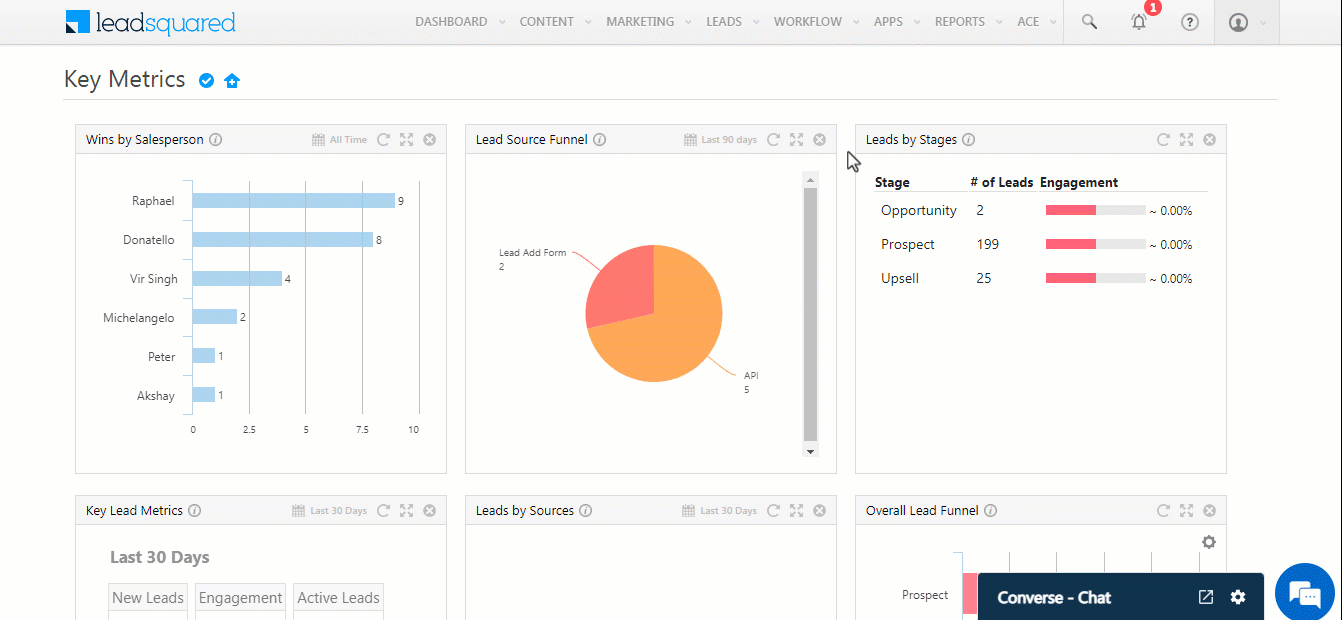
4.1 Configure the connector
Once you’ve installed the connector, on the Configure Bouncify pop-up, configure the connector access for the non-Admin users in your account. Only those users for whom access is granted can view and access the connector (under the Apps main menu).
- Select if you want to grant Connector Access that’s Based on Role or Advanced (User Level).
- Based on Role – From the Specify Roles dropdown, select the LeadSquared user roles that can use the connector.
- Advanced (User Level) – From the Advanced (User Level) dropdown, select a user boolean field. Based on the value entered in the selected boolean field, the user can access the connector (e.g., for the user Sam, if the “Is Employee” boolean user field contains the value “Yes”, then this user can access the connector).
- Once you’re done, click Save Details. To continue the configuration, refer to the below sections.
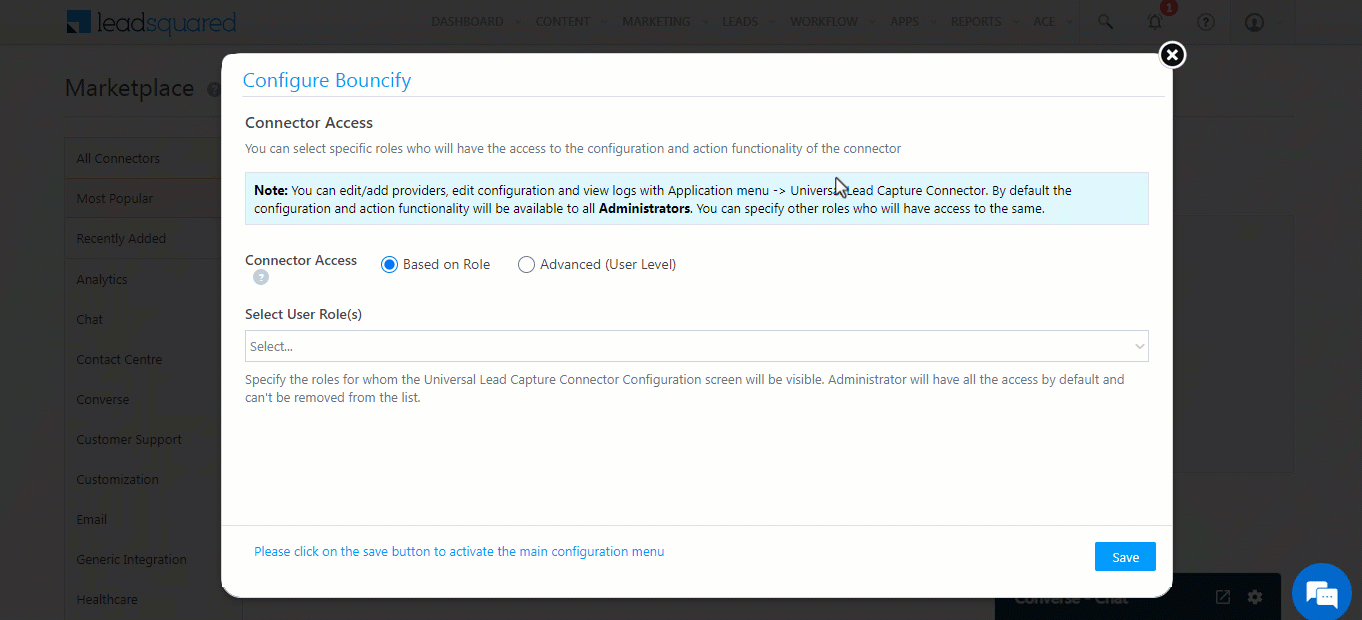
5. Admin Configuration
To continue the connector configuration, navigate to Apps>Bouncify.
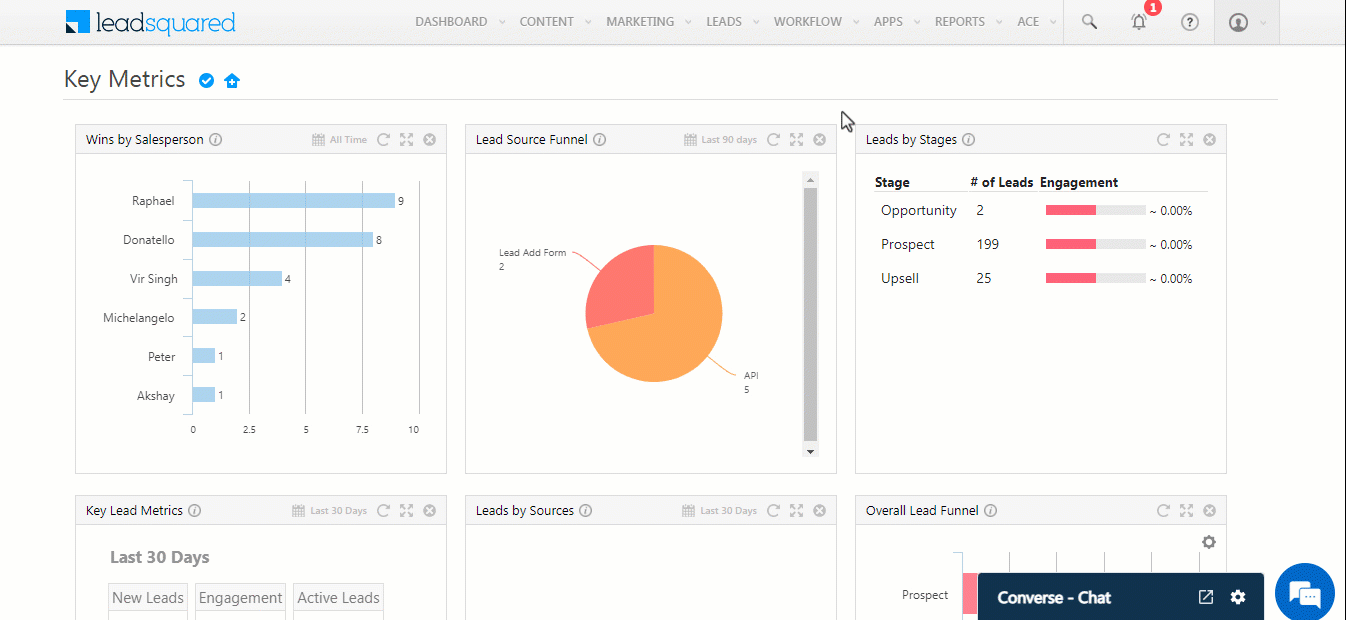
5.1 Basic Settings
Enter the following details –
| Property | Description |
| API Key | Pass your Bouncify account’s API Key here. |
| Lead Source | Enter the lead source through which the leads were captured (e.g., Bouncify, email campaign, etc.). This detail will be displayed on the Lead Details page, under Lead Source. |
| Default Country Code | If the lead’s mobile number is captured without a country code, the default country code that’s selected from the dropdown will be added to the lead’s mobile number. |
| Select Time Zone | The time zone followed in your Bouncify account. |
| Lead Capture Search By Criteria | To avoid duplicate leads, you must select one unique lead field (e.g., email Id, mobile number, PAN number, etc.) as the search key. This is used to identify the leads pushed from Bouncify. To know how to mark a LeadSquared lead field as unique, please refer to How to Make a Custom Field Unique. |
| Lead Capture Secondary Search By Criteria | If lead identification and capture through the primary Search By criteria fails, it will be re-attempted using the secondary Search By criteria. |
| Select User to Notify on Failure | If there is an error in fetching leads, the selected user will receive a failure message via email. You can select a user from the list of all the users available in your LeadSquared account. To know more about the type of errors, please refer to Error Notifications. |
| Enable Notification | To ensure notification emails are sent to the selected user when there’s a failed query, enable the |
Once you’ve entered all the details, click Save & Next.
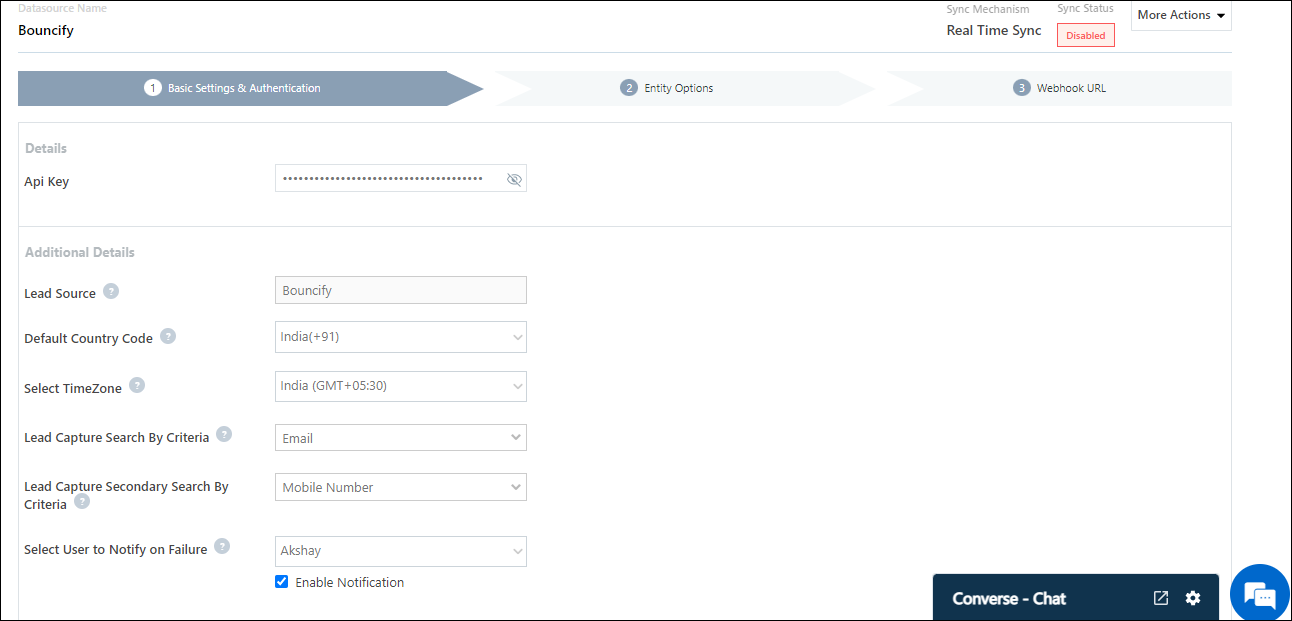
5.2 Entity Options
Define the sync behavior of the connector when leads are captured.
5.2.1 Lead/Contact Entity
Based on the Lead Capture Search By criteria (email Id, phone number, etc.), LeadSquared identifies and captures leads from your Bouncify account. Lead capture is enabled by default, and it cannot be disabled. The following options are available to configure the connector’s Sync Behaviour –
- Capture (Create and Update existing) Record – Leads that only exist in your Bouncify account (but not in your LeadSquared account) will get created in LeadSquared. Leads that exist in both your data provider and LeadSquared accounts will get updated.
- Create only new record – Leads that only exist in your Bouncify account (but not in your LeadSquared account) will get created in LeadSquared.
- Update only existing record – Leads that exist in both your Bouncify account and LeadSquared accounts will get updated in LeadSquared.
- Do nothing – Leads do not get created or updated by syncing.
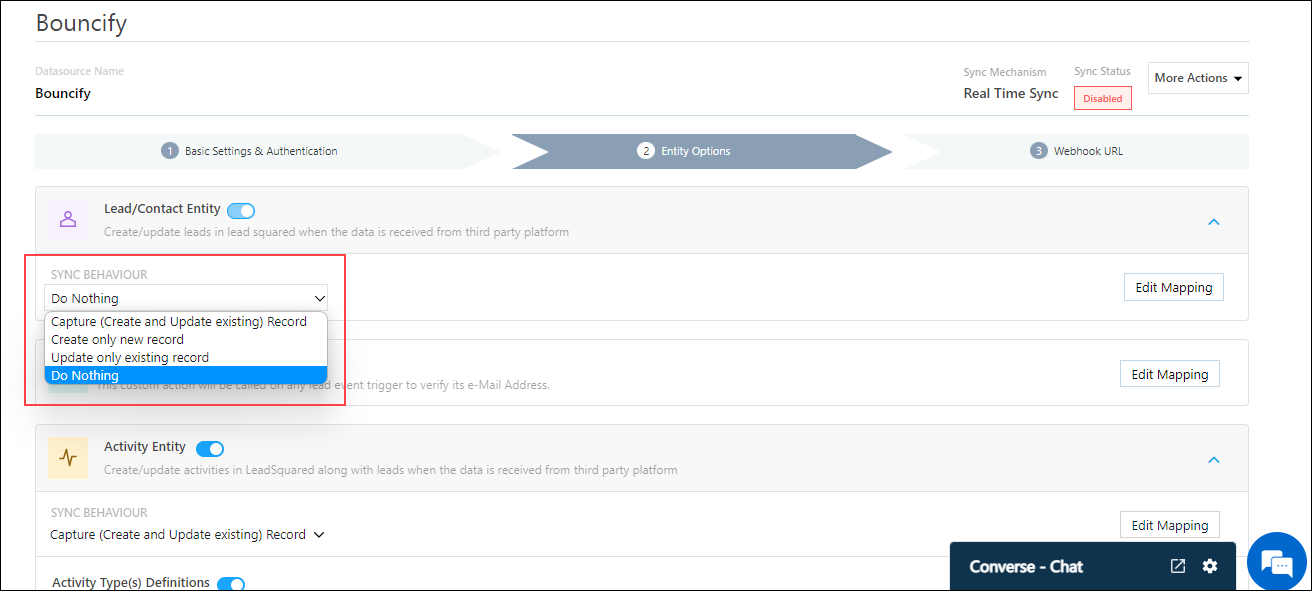
5.2.2 Mapping
On the Mapping screen, the Bouncify system fields mapped to the corresponding LeadSquared lead fields are visible. This mapping is carried out by default. If required, you can change or update the default field mapping.
- To provide a default value for any field, click
 , enter the value under Default Value, and click
, enter the value under Default Value, and click  .
.- If the data provider doesn’t send data for any lead field, then the default value will get assigned to that specific field. But if the field already has an existing value, then the default value will be ignored.
- To disable lead data capture for any field, disable the
 slider.
slider. - You can also mark and update a unique lead field as the search key from this screen, by clicking
 .
. - To create a custom Bouncify field, click the Add Custom button.
- Once this field is created, you must map it to the relevant LeadSquared lead field.
- After the field is mapped, to save the custom field, click
 .
. - To delete a custom field, click
 .
.
Once you’re done, click Save & Next.

5.2.3 Send Lead e-Mail for verification
You can use this action to send the lead’s email address for verification.
- On the Mapping screen, click
 if you need to edit the API Params, Default Mapping Key, and Description.
if you need to edit the API Params, Default Mapping Key, and Description. - click Save & Close.
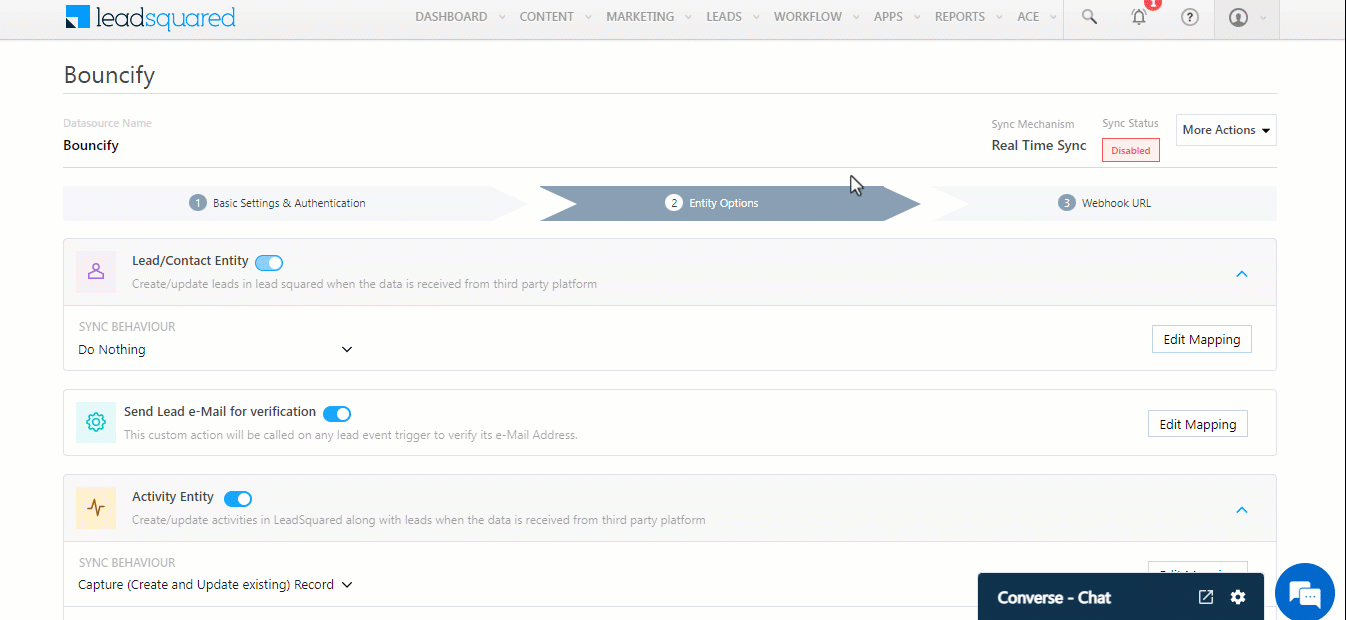
5.2.4 Activity Entity
Once leads are captured to LeadSquared, you can post custom activities to these leads (e.g., Ticket Creation, Chat Transcript, etc.). These activities will help users keep track of the lead’s journey to conversion.
To post activities to the leads captured from Bouncify, against Activity Entity, enable the ![]() slider. The following options are available to configure the connector’s Sync Behaviour when activities are synced to LeadSquared –
slider. The following options are available to configure the connector’s Sync Behaviour when activities are synced to LeadSquared –
- Capture (Create and Update existing) Record – New activities will get posted to the lead in LeadSquared while existing activities will get updated.
- Create only new record – Only new activities will get posted to leads in LeadSquared.
- Update only existing record – Only existing activities on the leads captured will get updated in LeadSquared.
Once done, click Save & Next.
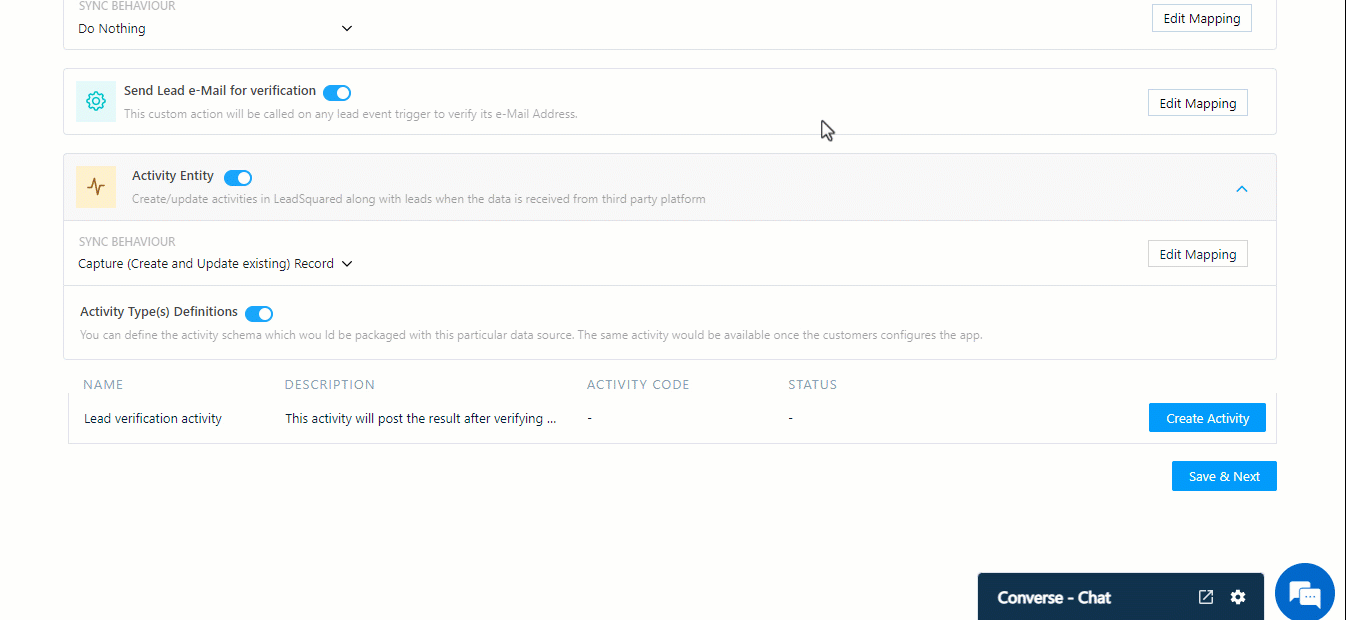
5.3 Generate Webhook URL
After you provide basic details and finish field mapping, a custom webhook URL is generated. To automate lead capture, copy this URL and configure it on your Bouncify account.
After you’ve set up the webhook, click More Actions, and enable the sync job. This ensures that through the webhook, lead data from Bouncify is pushed to LeadSquared.
Note: To view logs of all the sync jobs that have taken place, from the More Actions dropdown, click View Logs.
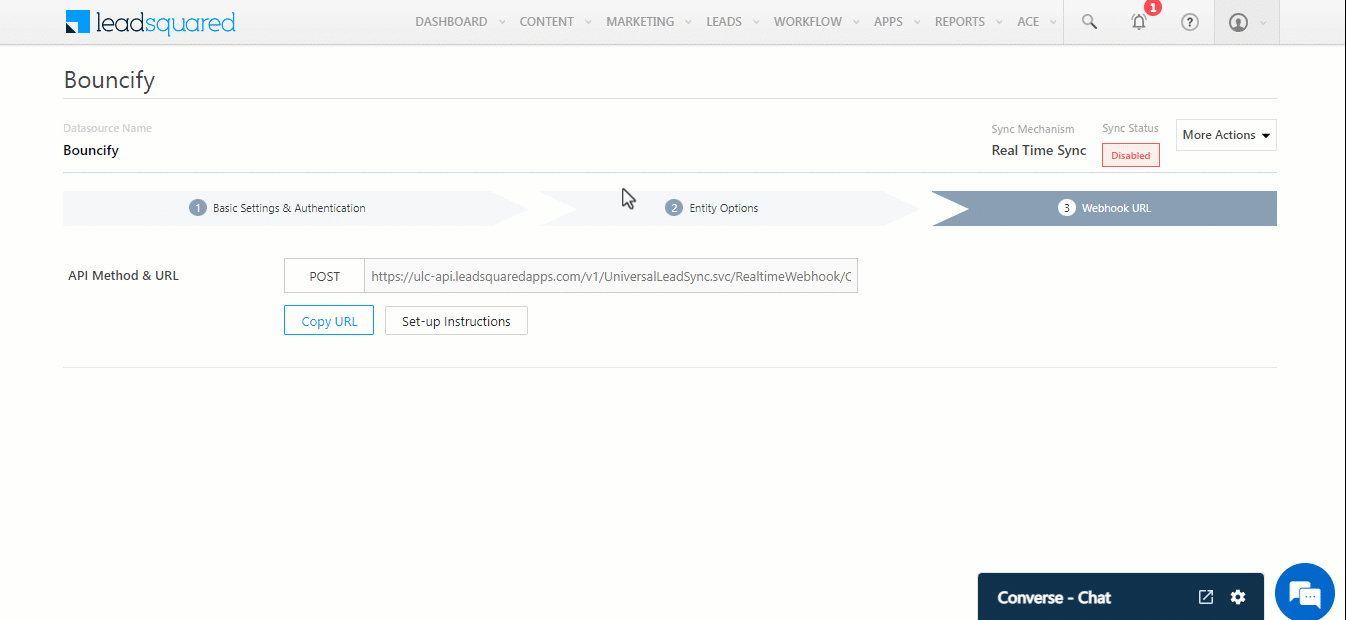
6. Create an Automation
Use the Webhook URL to create an automation that sends a lead’s email address to Bouncify for verification.
- Navigate to Workflow>Automation, click Create Automation, and select the New Lead trigger.
- On the Automation starts when a lead is added pop-up –
- Click +Add Conditions.
- The Automation should run for new leads that have an email address, so, add a criteria that checks the email lead field contains data.
- Once you’re done, click Save.
- Click
 , and under Custom, click Webhook.
, and under Custom, click Webhook. - On the Webhook pop-up, enter the following details –
- Name – Enter a relevant name for the webhook. We’re calling it “Bouncify Lead verification Activity”.
- URL – Select the method as https://, and paste the connector’s webhook URL that was generated in the previous step. Ensure you remove “https://” from the URL.
- Content Type – Select application/json.
- Save Response – You can select either Yes or No.
- Custom Headers – You can skip this step.
- Notify on Failure – Select which user you want to notify if the webhook fails.
- Retry Count – The number of times you want to retry when the webhook fails.
- Once you’re done, click Save, and then click Publish.

7. View Logs
Here, you can view logs of all the sync jobs that have taken place. View New Events (New Leads), Updated Events (Updated Leads), and Errors (when capturing leads).
- Navigate to Apps>Bouncify.
- From the More Actions dropdown, click View Logs.
- You can filter the logs by selecting a date range (Today, Last 7 Days, This Month, and Last Month), by selecting the Job Status (“All”, “Success” and “Failure”), and by selecting the Sync Status (All, Error, and Success).
- You can view the sync status of the following events –
- New Events – List of all the new leads that have been created in LeadSquared during the selected date range.
- Updated Events – A list of all the –
- Duplicate leads that were created with the same Search by Criteria value (e.g., with the same Email Id, Mobile Number, etc.).
- Leads that previously contained errors, which were fixed and synced successfully.
- Failed – The list of leads that have not been captured due to mapping errors (e.g., when a boolean field is mapped to an integer field, etc.).
- To view the Sync Response details, under Request ID/Sync Job ID, click the Id.
- Under the right panel, you can view the response status, the API URL, the request, and the response.
- The responses that are successful will contain the details of the leads that have been pushed from Bouncify.
- To view the lead capture response under Sync API Response, Leads Updated and Errors in Leads, click
 .
.
Note:
- For a response that contains an error, the reason for the error is listed in the response. Once you fix it, you can click the Retry button to perform the sync again.
- The current Lead Sync Behaviour will reflect in the Logs screen. This will help identify the sync that’s used (Capture or Update) for the selected Request/Sync Job Id.
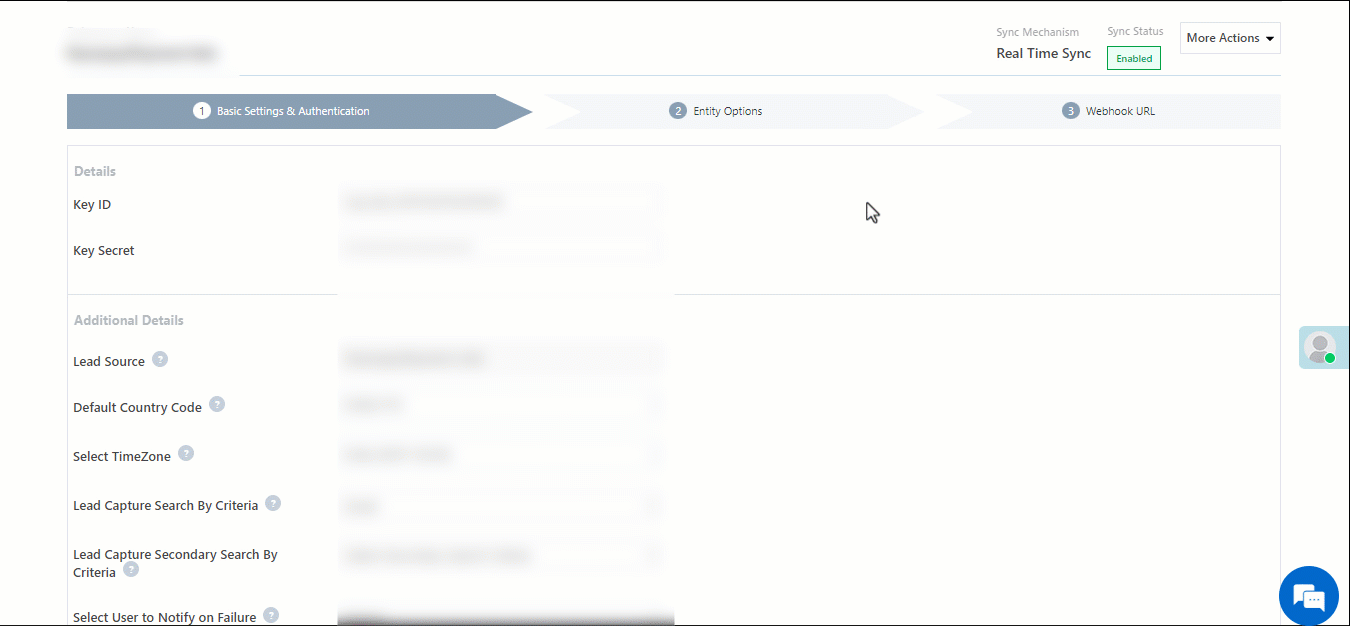
8. Other Actions
You can edit or delete the Bouncify connector instance that you created. To do this –
- Navigate to Apps>App Marketplace.
- Search for Bouncify.
- Alongside the Bouncify connector, hover your cursor over
 .
. - From the list of options, you can perform the following actions –
- Edit Configuration
- Disable Configuration
- Remove Configuration
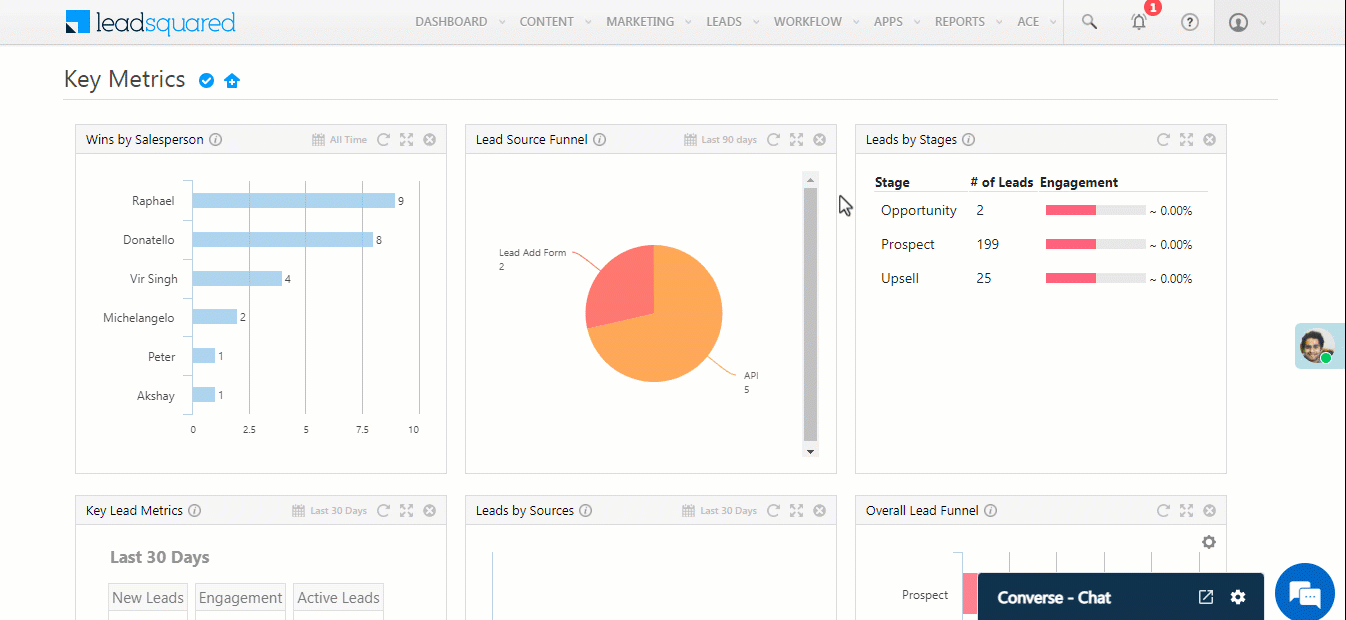
9. View Reports
You can view the total number of leads that have been pushed by Bouncify, by referring to the Lead Source report. To know more, please refer to How to track the source of your Leads using Lead Source Report?
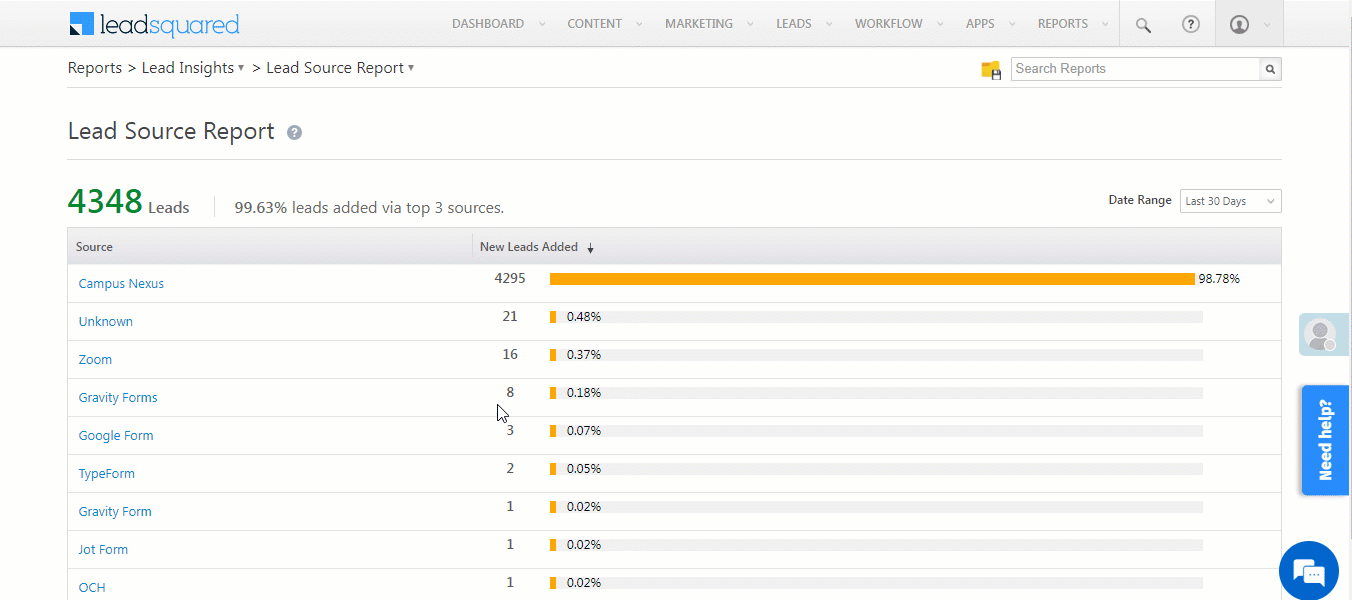
Any Questions?
Did you find this article helpful? Please let us know any feedback you may have in the comments section below. We’d love to hear from you and help you out!







How can we use the result of the activity to send emails to verified emails?
Hi, Rohit. The Bouncify connector validates whether an email ID is valid and logs the activity accordingly. Emails can be sent to these verified IDs through the Send Email automation card.